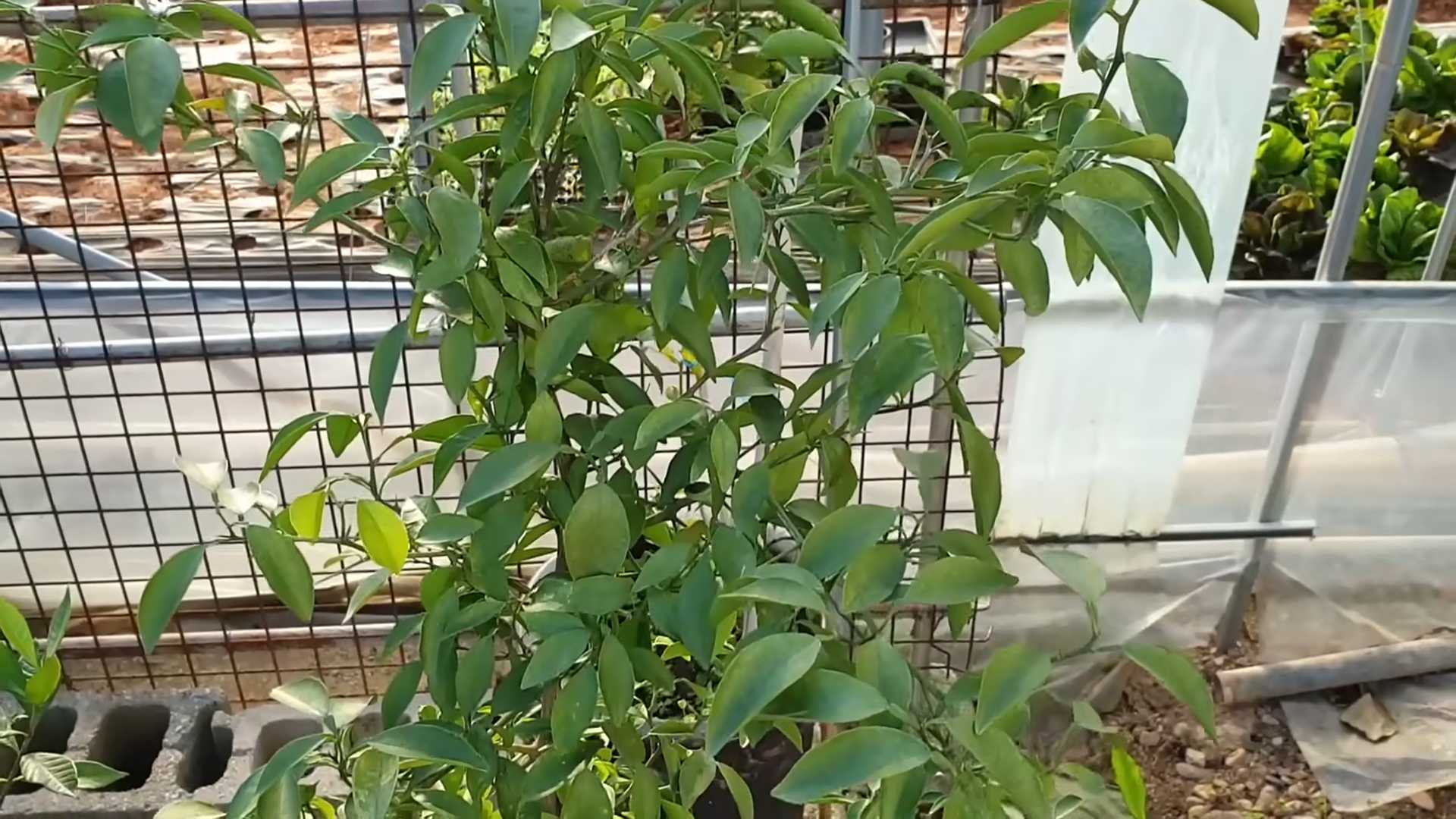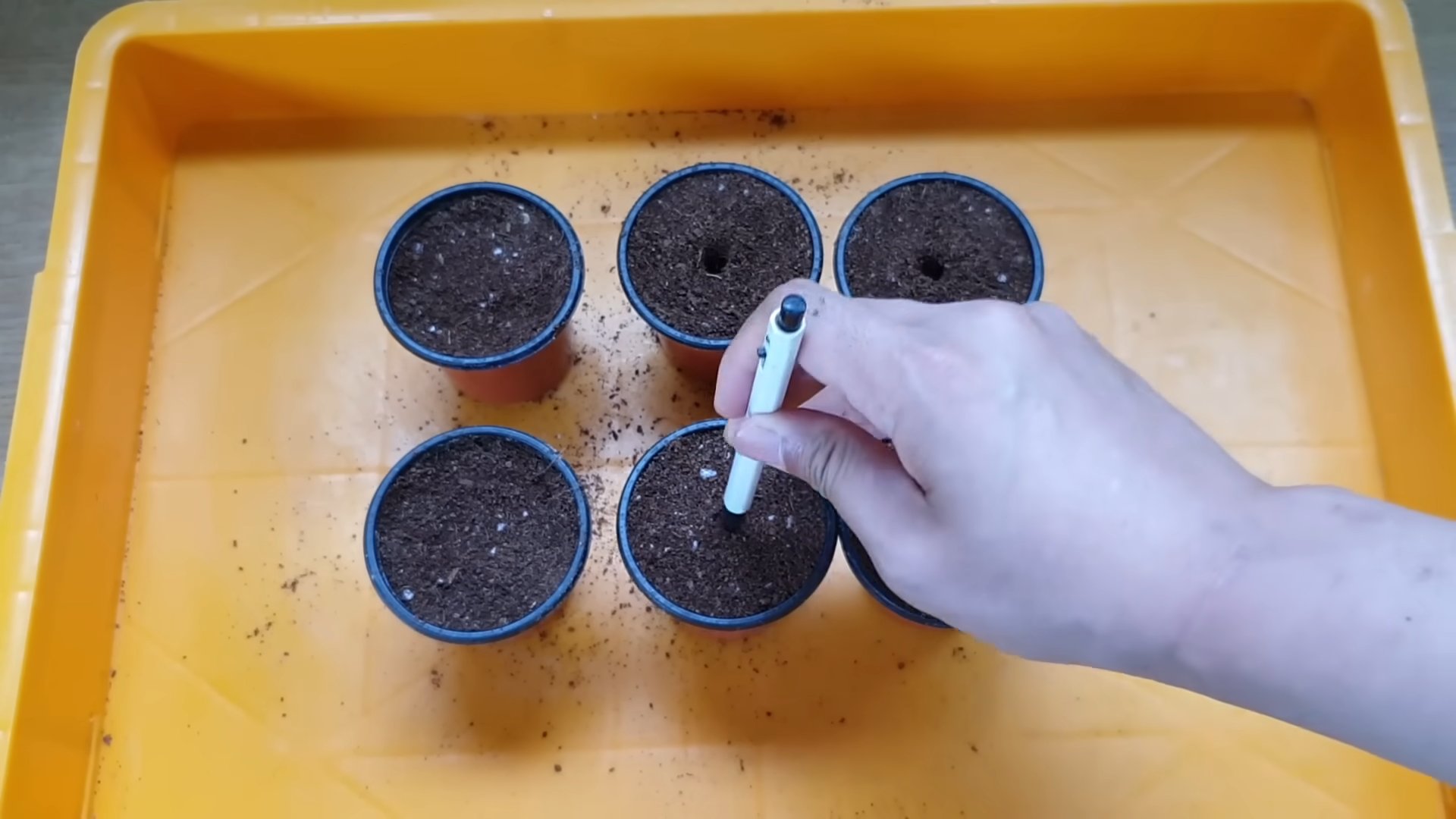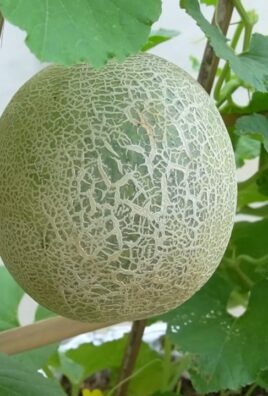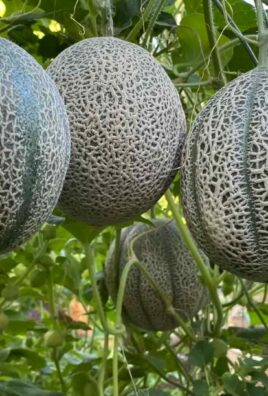Growing Lemon Tree from Seed might seem like a daunting task, conjuring images of sprawling orchards and years of patient waiting. But what if I told you that cultivating your own vibrant lemon tree from a humble seed is not only achievable but also a deeply rewarding DIY project? For centuries, citrus trees have held a special place in cultures around the world, symbolizing prosperity, health, and even purification. From ancient Roman gardens to sun-drenched Mediterranean groves, the allure of fresh, fragrant lemons has endured.
In today’s world, where access to fresh produce is often taken for granted, the ability to nurture your own food source is incredibly empowering. Imagine the satisfaction of squeezing a lemon grown from a seed you planted yourself into your morning tea or using its zest to elevate your favorite recipes! This DIY guide will equip you with the knowledge and simple techniques to successfully embark on your own growing lemon tree from seed adventure. We’ll break down the process into easy-to-follow steps, ensuring that even beginners can experience the joy of watching their very own citrus sapling flourish. So, ditch the store-bought lemons for a while and let’s get our hands dirty!

Growing Your Own Lemon Tree from Seed: A Detailed Guide
Hey there, fellow plant enthusiasts! Ever dreamed of having your own lemon tree, bursting with fragrant blossoms and juicy, homegrown lemons? Well, guess what? You can totally make that dream a reality, and it’s easier than you might think! Growing a lemon tree from seed is a rewarding (though patient!) process. It’s a fantastic way to connect with nature and enjoy the fruits (literally!) of your labor. Let’s dive into the nitty-gritty of how to do it.
Choosing Your Lemon Seeds
First things first, we need seeds! Now, you can’t just grab any old lemon from the grocery store and expect it to work. Here’s what I’ve learned about selecting the best seeds:
* Opt for Organic Lemons: This is super important. Non-organic lemons are often treated to prevent sprouting, which defeats the whole purpose. Look for lemons labeled “organic” at your local grocery store or farmer’s market.
* Pick Healthy-Looking Lemons: Choose lemons that are firm, bright yellow, and free from blemishes or soft spots. A healthy lemon is more likely to contain viable seeds.
* Freshness Matters: The fresher the lemon, the better the chances of germination. Try to use lemons that have been recently purchased.
* Look for Mature Seeds: When you cut open the lemon, look for plump, well-developed seeds. Avoid any that are shriveled, discolored, or damaged.
Preparing Your Lemon Seeds for Planting
Okay, you’ve got your organic lemon and you’ve extracted some promising seeds. Now it’s time to prep them for their new life!
1. Extract the Seeds: Carefully cut open your lemon and remove the seeds. I usually aim for at least 5-10 seeds, just in case some don’t germinate.
2. Clean the Seeds: Gently wash the seeds under running water to remove any pulp or sugary residue. This is crucial to prevent mold growth, which can kill your little seedlings before they even get started.
3. Stratification (Optional, but Recommended): This process mimics the natural winter conditions that lemon seeds would experience in the wild. It can significantly improve germination rates. Here’s how I do it:
* Wrap the cleaned seeds in a damp paper towel. Make sure the paper towel is moist, not soaking wet.
* Place the wrapped seeds in a sealed plastic bag or container.
* Store the bag in the refrigerator (not the freezer!) for about 30 days.
4. Peeling the Seed Coat (Optional): Some people swear by peeling the outer seed coat to speed up germination. It’s a bit fiddly, but here’s how:
* Gently nick the seed coat with a sharp knife or fingernail.
* Carefully peel away the outer layer, being careful not to damage the inner seed.
* I’ve had success both with and without peeling, so it’s really up to you.
Planting Your Lemon Seeds
Alright, your seeds are prepped and ready to go! Now for the fun part: planting!
1. Choose Your Planting Medium: You’ll need a well-draining potting mix. I like to use a mix specifically formulated for citrus or seedlings. You can also make your own by combining equal parts peat moss, perlite, and vermiculite.
2. Select Your Containers: Small pots or seedling trays are perfect for starting lemon seeds. Make sure they have drainage holes to prevent waterlogging.
3. Fill the Containers: Fill your chosen containers with the potting mix, leaving about an inch of space at the top.
4. Plant the Seeds: Make a small hole (about 1/2 inch deep) in the center of each container. Place one seed in each hole and gently cover it with soil.
5. Water Thoroughly: Water the soil gently until it’s evenly moist but not soggy.
6. Create a Humid Environment: Lemon seeds germinate best in a humid environment. You can achieve this by covering the containers with plastic wrap or a clear plastic dome. This will help trap moisture and keep the soil consistently damp.
7. Provide Warmth: Place the containers in a warm location, ideally between 70-80°F (21-27°C). A heat mat can be helpful if your home is cooler.
8. Be Patient: Germination can take anywhere from 2 weeks to a month (or even longer!). Keep the soil consistently moist and be patient. Don’t give up!
Caring for Your Lemon Seedlings
Yay, you have seedlings! Now comes the crucial part of nurturing them into healthy little lemon trees.
1. Remove the Cover: Once the seedlings emerge, remove the plastic wrap or dome to allow for better air circulation.
2. Provide Adequate Light: Lemon seedlings need plenty of bright, indirect light. A sunny windowsill is ideal, but you may need to supplement with a grow light, especially during the winter months.
3. Water Regularly: Water the seedlings when the top inch of soil feels dry to the touch. Avoid overwatering, as this can lead to root rot.
4. Fertilize Sparingly: Once the seedlings have developed a few sets of true leaves, you can start fertilizing them with a diluted citrus fertilizer. Follow the instructions on the fertilizer label carefully. I usually start with half the recommended dose.
5. Repot as Needed: As the seedlings grow, they’ll need to be repotted into larger containers. Choose pots that are only slightly larger than the previous ones.
6. Provide Support: As your lemon tree grows, it may need some support. You can use a small stake or trellis to help it stay upright.
7. Pruning: Pruning is important for shaping your lemon tree and encouraging branching. Remove any dead or damaged branches, and prune to maintain a desired shape.
Hardening Off Your Lemon Tree
Before you can plant your lemon tree outdoors (if you live in a suitable climate), you’ll need to “harden it off.” This process gradually acclimates the tree to outdoor conditions.
1. Start Slowly: Begin by placing the tree outdoors in a sheltered location for just a few hours each day.
2. Gradually Increase Exposure: Over the course of a week or two, gradually increase the amount of time the tree spends outdoors.
3. Protect from Extreme Weather: Protect the tree from strong winds, direct sunlight, and extreme temperatures.
4. Monitor for Stress: Watch for signs of stress, such as wilting or leaf burn. If you notice any problems, bring the tree back indoors and adjust the hardening-off process accordingly.
Planting Your Lemon Tree Outdoors (If Applicable)
If you live in a climate where lemon trees can thrive outdoors year-round (typically USDA zones 9-11), you can eventually plant your tree in the ground.
1. Choose a Sunny Location: Lemon trees need at least 6-8 hours of sunlight per day.
2. Prepare the Soil: Dig a hole that’s twice as wide and just as deep as the root ball. Amend the soil with compost or other organic matter to improve drainage and fertility.
3. Plant the Tree: Carefully remove the tree from its container and place it in the hole. Backfill with soil, gently firming it around the roots.
4. Water Thoroughly: Water the tree thoroughly after planting.
5. Mulch: Apply a layer of mulch around the base of the tree to help retain moisture and suppress weeds.
Overwintering Your Lemon Tree Indoors (If Applicable)
If you live in a colder climate, you’ll need to bring your lemon tree indoors for the winter.
1. Choose a Sunny Location: Place the tree in a sunny location, such as a south-facing window.
2. Provide Supplemental Light: You may need to supplement with a grow light, especially during the shorter days of winter.
3. Water Sparingly: Water the tree less frequently during the winter months, as it will be growing more slowly.
4. Maintain Humidity: Lemon trees prefer a humid environment. You can increase humidity by using a humidifier or placing the tree on a tray filled with pebbles and water.
5. Watch for Pests: Keep an eye out for pests, such as spider mites or scale, and treat them promptly if they appear.
Common Problems and Solutions
Even with the best care, you might encounter some challenges along the way. Here are a few common problems and how to address them:
* Yellowing Leaves: This can be caused by a variety of factors, including overwatering, underwatering, nutrient deficiencies, or pest infestations. Check the soil moisture, fertilize appropriately, and inspect for pests.
* Leaf Drop: Leaf drop can be caused by sudden changes in temperature, humidity

Conclusion
So, there you have it! Growing a lemon tree from seed might seem like a long game, and it is, but the rewards are well worth the patience. Not only will you have the immense satisfaction of nurturing a plant from its very beginning, but you’ll also gain a deeper appreciation for the natural world and the incredible power of a single seed. This DIY project isn’t just about getting lemons; it’s about the journey, the learning, and the connection you’ll forge with your own little citrus creation.
Why is this a must-try? Because it’s more than just a gardening project; it’s an experiment in patience, a lesson in botany, and a source of immense personal satisfaction. Imagine the pride you’ll feel when you finally harvest your first lemon, knowing you nurtured it from a tiny seed. Plus, it’s a fantastic conversation starter!
But the fun doesn’t stop there. Feel free to experiment with different varieties of lemons. Meyer lemons are known for their sweeter flavor and thinner skin, while Eureka lemons are the classic tart variety. You could even try growing other citrus fruits like limes or oranges using the same method. Consider grafting a known lemon variety onto your seedling once it’s established to ensure fruit quality and reduce the time to fruiting. This is a more advanced technique, but it can significantly improve your chances of getting delicious lemons sooner rather than later.
Another variation to consider is the type of soil you use. While a well-draining potting mix is generally recommended, you can tailor the mix to your specific climate and growing conditions. For example, if you live in a particularly dry area, you might want to add some moisture-retentive materials like peat moss or coconut coir to the mix.
Don’t be discouraged if your first attempt doesn’t yield immediate results. Growing a lemon tree from seed requires patience and persistence. But with a little care and attention, you’ll be well on your way to enjoying your own homegrown lemons.
We wholeheartedly encourage you to embark on this rewarding DIY adventure. Start your own lemon tree from seed and witness the magic of nature firsthand. And most importantly, don’t forget to share your experiences with us! We’d love to hear about your successes, your challenges, and any tips or tricks you discover along the way. Share your photos and stories in the comments below – let’s create a community of lemon-loving gardeners! Let us know what kind of lemon tree you are growing!
Frequently Asked Questions (FAQ)
How long does it take to grow a lemon tree from seed?
This is probably the most common question, and the honest answer is: it varies. Generally, it can take anywhere from 3 to 6 years for a lemon tree grown from seed to produce fruit. Grafted trees, on the other hand, can start producing fruit much sooner, often within 1 to 2 years. Several factors influence the time to fruiting, including the variety of lemon, the growing conditions (sunlight, temperature, soil), and the overall health of the tree. Patience is key!
What kind of soil is best for growing a lemon tree from seed?
Lemon trees thrive in well-draining soil that is slightly acidic. A good potting mix for citrus trees typically consists of a blend of peat moss, perlite, and vermiculite. You can also add some compost or other organic matter to improve drainage and fertility. Avoid using heavy clay soils, as they can retain too much water and lead to root rot. The ideal pH range for lemon trees is between 6.0 and 7.0. You can test the pH of your soil using a soil testing kit and amend it accordingly if necessary.
How much sunlight does a lemon tree need?
Lemon trees are sun-loving plants and require at least 6 to 8 hours of direct sunlight per day. If you’re growing your lemon tree indoors, place it near a south-facing window where it can receive ample sunlight. You may also need to supplement with artificial grow lights, especially during the winter months. Insufficient sunlight can lead to stunted growth, reduced fruit production, and pale leaves.
How often should I water my lemon tree?
Watering frequency depends on several factors, including the size of the pot, the type of soil, the climate, and the time of year. Generally, you should water your lemon tree when the top inch of soil feels dry to the touch. Water thoroughly until water drains out of the bottom of the pot. Avoid overwatering, as this can lead to root rot. During the winter months, when the tree is dormant, you can reduce watering frequency.
What kind of fertilizer should I use for my lemon tree?
Lemon trees are heavy feeders and require regular fertilization to thrive. Use a fertilizer specifically formulated for citrus trees, following the instructions on the label. Citrus fertilizers typically contain a balanced blend of nitrogen, phosphorus, and potassium, as well as micronutrients like iron, zinc, and manganese. Fertilize your lemon tree every 4 to 6 weeks during the growing season (spring and summer). Reduce or stop fertilizing during the winter months.
How do I protect my lemon tree from pests and diseases?
Lemon trees are susceptible to various pests and diseases, including aphids, scale, spider mites, and citrus canker. Regularly inspect your tree for signs of infestation or disease. If you notice any problems, take action immediately. You can use insecticidal soap or horticultural oil to control pests. For diseases, you may need to use a fungicide. Proper sanitation and good air circulation can also help prevent pest and disease problems.
Can I grow a lemon tree indoors?
Yes, you can grow a lemon tree indoors, but it requires some extra care. Choose a dwarf variety of lemon tree that is well-suited for container growing. Provide plenty of sunlight, either natural or artificial. Maintain adequate humidity levels by misting the tree regularly or using a humidifier. Water and fertilize regularly, and repot the tree as needed. Be aware that indoor lemon trees may not produce as much fruit as outdoor trees.
How do I prune my lemon tree?
Pruning is essential for maintaining the shape and health of your lemon tree. Prune your tree in late winter or early spring, before new growth begins. Remove any dead, damaged, or diseased branches. Thin out the canopy to improve air circulation and sunlight penetration. You can also prune to shape the tree and control its size. Avoid pruning too heavily, as this can reduce fruit production.
What should I do if my lemon tree isn’t producing fruit?
There are several reasons why your lemon tree might not be producing fruit. It could be too young, not getting enough sunlight, not being fertilized properly, or not being pollinated. Make sure your tree is at least 3 to 6 years old, receiving at least 6 to 8 hours of direct sunlight per day, and being fertilized regularly with a citrus fertilizer. If your tree is not being pollinated, you can hand-pollinate the flowers using a small brush.
How do I know when my lemons are ripe?
Lemons are typically ripe when they are fully yellow and slightly soft to the touch. The skin should be smooth and thin. You can also test the ripeness by squeezing the lemon gently. A ripe lemon will feel heavy and juicy. The exact time of year when lemons ripen depends on the variety and the climate.




Leave a Comment